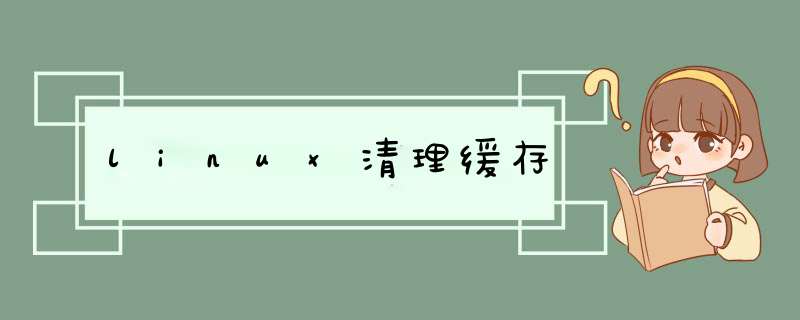
查看缓存的命令
free -m
清理缓存的命令
echo 1 > /proc/sys/vm/drop_caches
echo 2 > /proc/sys/vm/drop_caches
echo 3 > /proc/sys/vm/drop_caches
说明:
1>. /proc是一个虚拟文件系统,我们可以通过对它的读写 *** 作作为与kernel实体间进行通信的一种手段。也就是说可以通过修改/proc中的文件,来对当前kernel的行为做出调整。也就是说我们可以通过调整/proc/sys/vm/drop_caches来释放内存。 0 – 不释放
1 – 释放页缓存
2 – 释放dentrIEs和inodes
3 – 释放所有缓存 数字1是用来清空最近放问过的文件页面缓存 数字2是用来清空文件节点缓存和目录项缓存 数字3是用来清空1和2所有内容的缓存。 2>. 关于drop_caches的官方说明如下: Writing to this file causes the kernel to drop clean caches,dentrIEs and inodes from memory,causing that memory to becomefree.
To free pagecache,use echo 1 > /proc/sys/vm/drop_caches;
to free dentrIEs and inodes,use echo 2 > /proc/sys/vm/drop_caches;
to free pagecache,dentrIEs and inodes,use echo 3 >/proc/sys/vm/drop_caches.
Because this is a non-destructive operation and dirty objects are not freeable,the user should run sync first. 3>. linux内核会将它最近访问过的文件页面缓存在内存中一段时间,这个文件缓存被称为pagecache。 Inode是linux/unix *** 作系统中的一种数据结构,包含了各文件相关的一些重要信息。在创建文件系统时,就会同时创建大量的inode。一般inode表会占用文件系统磁盘空间的1%。 总结
以上是内存溢出为你收集整理的linux清理缓存全部内容,希望文章能够帮你解决linux清理缓存所遇到的程序开发问题。
如果觉得内存溢出网站内容还不错,欢迎将内存溢出网站推荐给程序员好友。
欢迎分享,转载请注明来源:内存溢出

 微信扫一扫
微信扫一扫
 支付宝扫一扫
支付宝扫一扫
评论列表(0条)